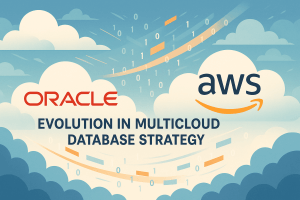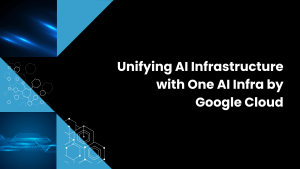
Digital transformation is all the rage – and it can’t happen without cloud. This post is derived from a discussion I had with Stu Miniman and John Furrier on theCUBE at the AWS Public Sector Summit 2018.
AWS has become a dominant – if not the dominant force in enterprise tech. AWS re:Invent is a premier industry event for enterprise cloud, cloud native app development and innovation in areas such as AI, Big Data, startup ecosystems, serverless and infrastructure-as-a-service. The AWS Public Sector Summit is a microcosm of re:Invent and is becoming the premier tech event for government. With its DC presence and dynamic leadership from Teresa Carlson, the AWS Public Sector Summit was one of theCUBE’s top events of the spring.
This event underscores a few key trends:
- The pace adoption of cloud services in the government is a two-edged sword. On the one hand, certain agencies like the CIA have been leaders in cloud adoption. On the other hand, regulation, certification complexities, administration turnover and inertia sometimes work against the adoption of leading technologies;
- As such AWS’s Gov Cloud tends to adopt technologies on a curve behind the company’s commercial offerings. Examples include VMware on AWS, region access (e.g. Gov Cloud for public sector running on the east region starts just this year) and Lambda was originally launched in 2014 and wasn’t available on Gov Cloud until 2017;
- Startup innovation is palpable in areas like IoT and AI – cloud has injected excitement into public sector;
- Cyber security is hugely important and the government sector is a proving ground for cloud generally and AWS specifically.
What follow is a summary of our coverage on theCUBE at AWS Public Sector Summit 2017:
theCUBE at AWS Public Sector
Stu Miniman, John Furrier, and I joined forces to wrap-up day one of AWS Public Sector Summit 2018 in June. Stu compared the vibe of the Summit to that of re:Invent 2015 meaning the scope, buzz and ecosystem energy were comparable. Our discussions that week were predominantly focused on the public sector market and specifically touched on modernization and digital transformation, which is hitting the public sector across the board. Rapid advancements in technology and performance are changing current operating models, the role of the supplier, and the speed of innovation.
The Future is Now with Cloud in Public Sector
Digital transformation is a federal imperative. We heard this time and again at the Summit. On a federal level, Furrier argued that people are frustrated, and rightly so, by the government’s dated approaches to various initiatives. Take IT workers for instance, who are bound and restrained by old, outdated processes. Moreover, legacy security is becoming inferior relative to cloud in terms of a barrier that stops everything. With cloud, that’s not the case anymore. Our analysis cited comments from the CIA, who said publicly that “on its worst day, cloud security is still better than the best day with our client/server technology.”
My mind harkened back to the watershed moment in cloud for the federal government specifically and cloud generally. In particular, the milestone deal that “was a wake up call to the old guard.” In 2013, four years after AWS announced EC2, IBM tried, without avail, to win in the courts what it couldn’t win in the market in a battle for the CIA’s business. The government awarded a cloud contract to AWS; IBM appealed and the ruling judge accused IBM of gaming the system. I remember reading Judge Wheeler’s ruling and this chart in the ruling blew me away:

This was the first time (in public) that AWS went head-to-head with the greatest brand in enterprise computing. And AWS crushed IBM; forcing IBM to go out and spend $2B to acquire SoftLayer to get into the cloud business. The ruling exposed IBM as playing games with pricing as seen in the “Guaranteed Minimum.” IBM pulled out all the stops to win the business and got crushed.
Migrating to a Public Cloud
Stu wanted to talk about digital transformation in a different context. He brought the conversation back to 2018 and talked about modernization. Data is making its way into the public cloud, facilitating an environment for innovation. Companies that take advantage of this are leveraging the data and finding ways to “help charities, help our communities, and do it in cost effective ways.” This is fundamental to digital transformation.
Furrier added insights concerning Teresa Carlson, whom he called the “CEO of AWS” after her keynote. Carlson, according to Furrier, “knows the government game…and she motivates her team…she listens to the customers, and she takes advantage of that Amazon vibe.” Furrier described this Amazon culture as identifying a problem and solving it – leading to lower prices and increased speed and efficiency.
Stu said, “so, the fed kind of sets the bar, and then state, local, education, they all learn from there. So, as you said, John, Teresa and her team have really built a flywheel of customers, and those customers, they understand the product. They’re going deeper on that.”
Furrier offered the example of CloudChecker, a company who was built for the cloud, rather than going back and “cloudifying” an existing model. He claimed this is a signal of what is making successful deployments from a customer perspective.
VMware & AWS
I wanted to talk about the partnership between VMWare cloud and AWS (AWS announced the VMware deal was extending to Gov Cloud). We talked to a number of customers at the Summit who indicated that ultimately they were moving their on-prem workloads to the cloud. Specifically, once their current ELA (enterprise license agreement) with VMware expires, they expect to take a one-way trip to “Hotel Cloud-ifornia.” We’ll be exploring this on theCUBE at the upcoming VMworld 2018. I personally don’t believe the vast majority of customers will be able to just shove their businesses into the public cloud – it’s too complicated, expensive and impractical. We’ve quantified these trends in our True Private Cloud report. However the trend is clear. Cloud is growing, AWS is tracking toward $24B in revenue this year and despite VMware’s success, most on-prem markets are growing in the low single digits.
But the direction is clear. AWS’ operating income consistently runs in the mid-20’s. Its financials look more like a software company than one that provides infrastructure. I pointed this out five years ago and documented in this “oldie but goodie” Wikibon post. In this piece I argued that AWS was turning infrastructure services into a software-like market where marginal costs at volume drive toward zero. Comparing Amazon web services’ 26 percent operating income to that of other infrastructure providers, HPE is at around eight percent, IBM is at nine percent, and VMWare is at nineteen percent, “only companies like Oracle and Microsoft are showing better operating income on a percentage of revenue basis. In summary, Amazon is crushing it.
Side Note: I remember in the early parts of this decade – large banks I met with talked about how they thought they could compete at scale with the top cloud suppliers. That narrative has reversed as the large cloud players are demonstrating superior efficiencies at scale.
There’s No Algorithm for Experience
“Like every Amazon show I’ve been to, I’m impressed, it set a high bar,” Stu remarked, “the quality of people, the energy, the passion, the discussion of innovation and change, is just super impressive.” AWS is clearly leading the way in cloud but it’s not alone. AWS dominates in IaaS with more than 50% of the market. Much of AWS’ growth is coming out of legacy on-prem. While Microsoft claims faster growth and higher revenue in cloud, most of its revenue comes from Office 365, a segment in which AWS doesn’t play. Google is the other U.S.-based player but is far behind both AWS and Microsoft. Alibaba and other China Cloud players are a factor as well.
Stu, Furrier and I discussed these and other issues in our Day 1 analysis, clips of which you can see below:



